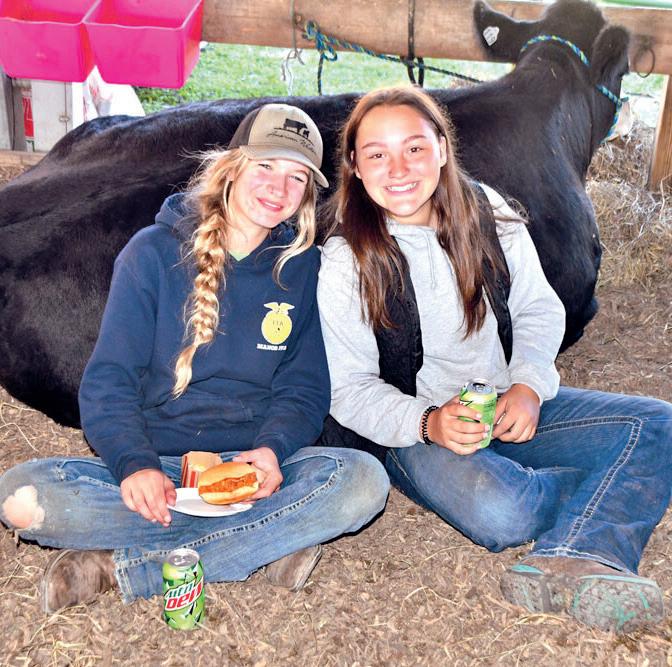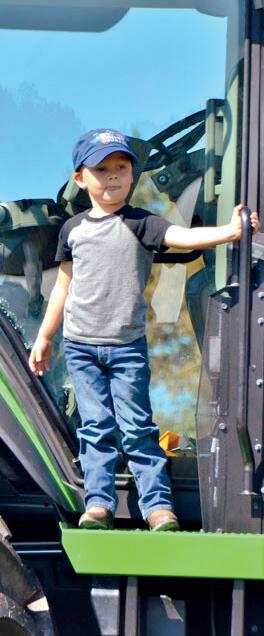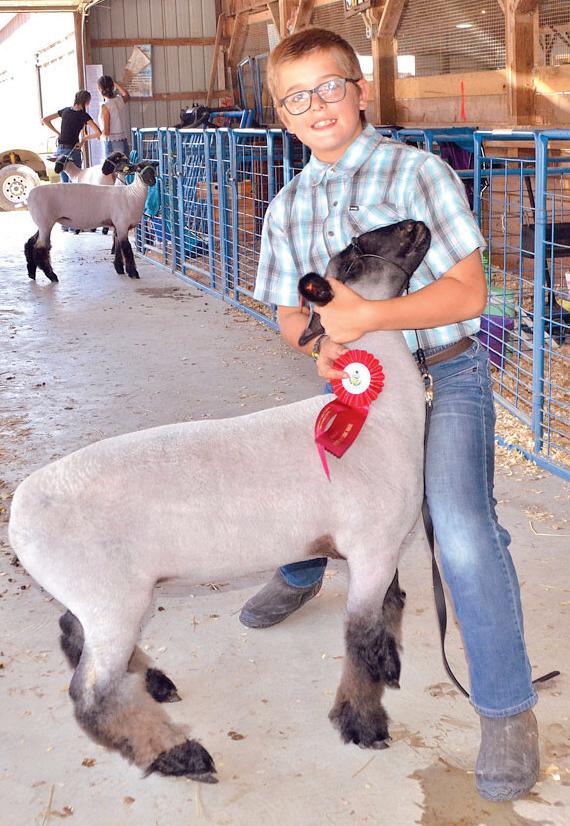















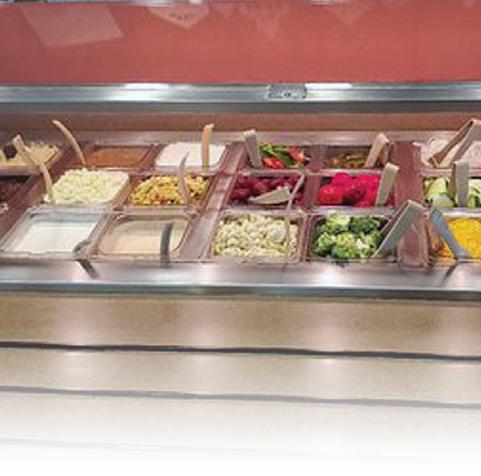

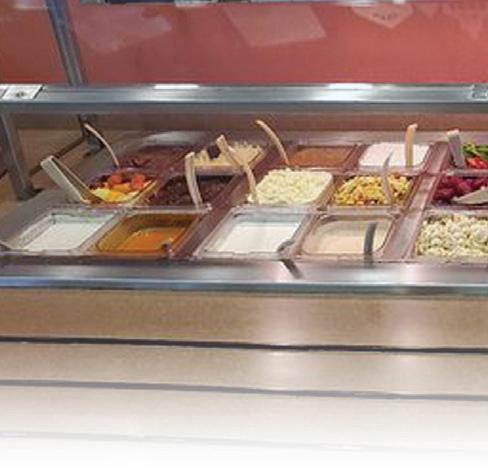

Dairy is an important industry in Pennsylvania, but how much do you know about cows and the milk they produce? Kylee Hlavaty, the 2023-24 Lancaster County dairy princess, has shared a variety of facts about milk and the livestock that produce it.
A cow drinks roughly 40 gallons of water a day. That’s about an entire bathtub!

Milk is tested 17 times from the farm to the manufacturer to ensure a high-quality product. If the milk fails any of these tests, the entire batch is dumped.

There are seven breeds of dairy cows, with the most popular being the Holstein.

Drinking chocolate milk helps people to refuel after a workout.
Approximately 97% of dairy farms in the U.S. are family owned. Milk is considered nature’s most perfect beverage as it contains 13 essential nutrients.
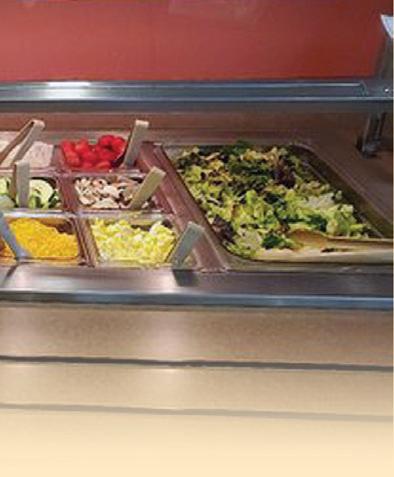
Breakfasttime
Lunchtime




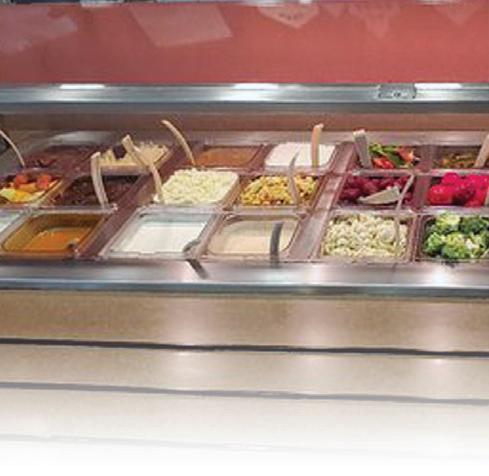

Dinnertime

Kylee is the daughter of Paul Hlavaty of Lebanon and Rick and Kim Riley of Millersville. She is a junior at Penn Manor High School, where she is a member of Manor FFA. As part of her FFA activities this school year, she intends to work with educators to form a dairy judging team. After high school, Kylee plans to attend Penn State University with the goal of becoming a large-animal veterinarian.
Kylee is one of 28 county dairy princesses in Pennsylvania. Together with the more than 200 junior representatives throughout the state and the state royalty team, which consists of three young women, the dairy princesses promote the nutritional value of dairy foods and the benefits of consuming them.
To learn more about the dairy princesses and dairy industry in Pennsylvania, search for @lanc.county.dairypromotion on Instagram.


If you live in the Southern End, you have likely crossed paths with large trucks that are transporting a mountain of fresh mulch and bear the name “Good’s” on the side. Even if you don’t employ Good’s services for your own lawn or garden, its signature trucks are easy to spot as they make several mulch deliveries a day throughout the area. Although the familyowned and family-operated business has continued to grow its presence in the community over the years, it all began with one skid loader, a single delivery truck and a family farm.

Good’s Mulch is still headquartered at the Good family’s 65-acre farm located just outside of Strasburg. The family used the property as a small dairy farm in the early 1900s before expanding into poultry with the addition of two commercial chicken houses in 1963. The farm continues to be used for raising organic, free-range chickens to this day, and it now boasts eight commercial chicken houses. In 2002, the Good family officially launched its mulch business. “We thought, ‘Hey, we already have most of the equipment we need on the farm. We just need a truck and a skid loader to haul stuff around,” said Austin Good, part owner of Good’s Mulch. “Since then, we have acquired about nine trucks for deliveries, and the family remains heavily involved.”
Austin represents the fourth generation in his family to run the business, which he currently co-owns with his father, Steve. Austin’s younger brother, Trent, works for the business full time and plans to become a co-owner

in the next few years. Austin lives near his parents’ and grandparents’ original homestead with his wife, Celina, and three young children, who will have an opportunity to become the fifth generation of Goods to run the business when they’re old enough.

Austin grew up on the family farm where his parents still live, and he had an opportunity to become involved with the business at a young age. After graduating from Elizabethtown College, he moved to Philadelphia, where he worked as a certified public accountant for a large business management consultant for three years. Steve and his brother ran the family’s business endeavors, which included the mulch business, chicken houses, dairy cows, a laundromat and a car wash. In 2016, the duo decided to divide their assets between the two of them; Steve retained the chicken and mulch side of the business. Shortly after, Austin decided to return to Lancaster with his wife to help his father run the business.

Although the move resulted in a drastic change of pace for Austin, he was able to apply much of what he had learned in the accounting world by managing the bookwork and many day-to-day operations of the family business. Austin welcomed the transition for a variety of reasons; being back in Lancaster allowed him to spend more time with his family and made it easier to visit
Celina’s family in Middletown. Austin was also happy to return to the area where he grew up, and his new role allowed him to spend more time outside and complete more hands-on work.
“I wanted something that would allow me to do more work to grow the business and provide for my family.” Austin said. And grow it has; each year, Good’s adds a few more delivery trucks to its fleet, and the business is in the process of opening a second location in Smoketown.

In addition to the opportunity for growth, Austin has enjoyed a different atmosphere since becoming involved with his family’s business again. Celina answers the phone, and he can rely on his father and brother to help him with pressing matters. The family is incentivized to continue the success of the business to provide more opportunities for the next generation of Goods, should they desire to take the mantle someday. The only downside, Austin joked, is the risk of family dinners becoming a meeting to discuss business affairs.
“Here, if you mess up or do good, you see the impact right away,” Austin said. “It’s what your life is about. I would love to grow it so that any of my kids will have an opportunity to be involved if they want to.”






1337 Byerland Church Road P.O. Box 465 Willow Street, PA 17584-0465
(717) 945-7367: Main
(814) 733-2157: Fax
• Estate Planning: Preparing Deeds, Wills, Power of Attorney, Healthcare Power of Attorney and Living Will.


• Estate Administration: Probate, Non-Probate, Gathering of Assets, Payment of Debts, Preparing Inheritance Tax Returns, and Estate Distribution.
• Real Estate Transfers
15% Military Discount with valid military ID or DD214.




(717) 945-7367




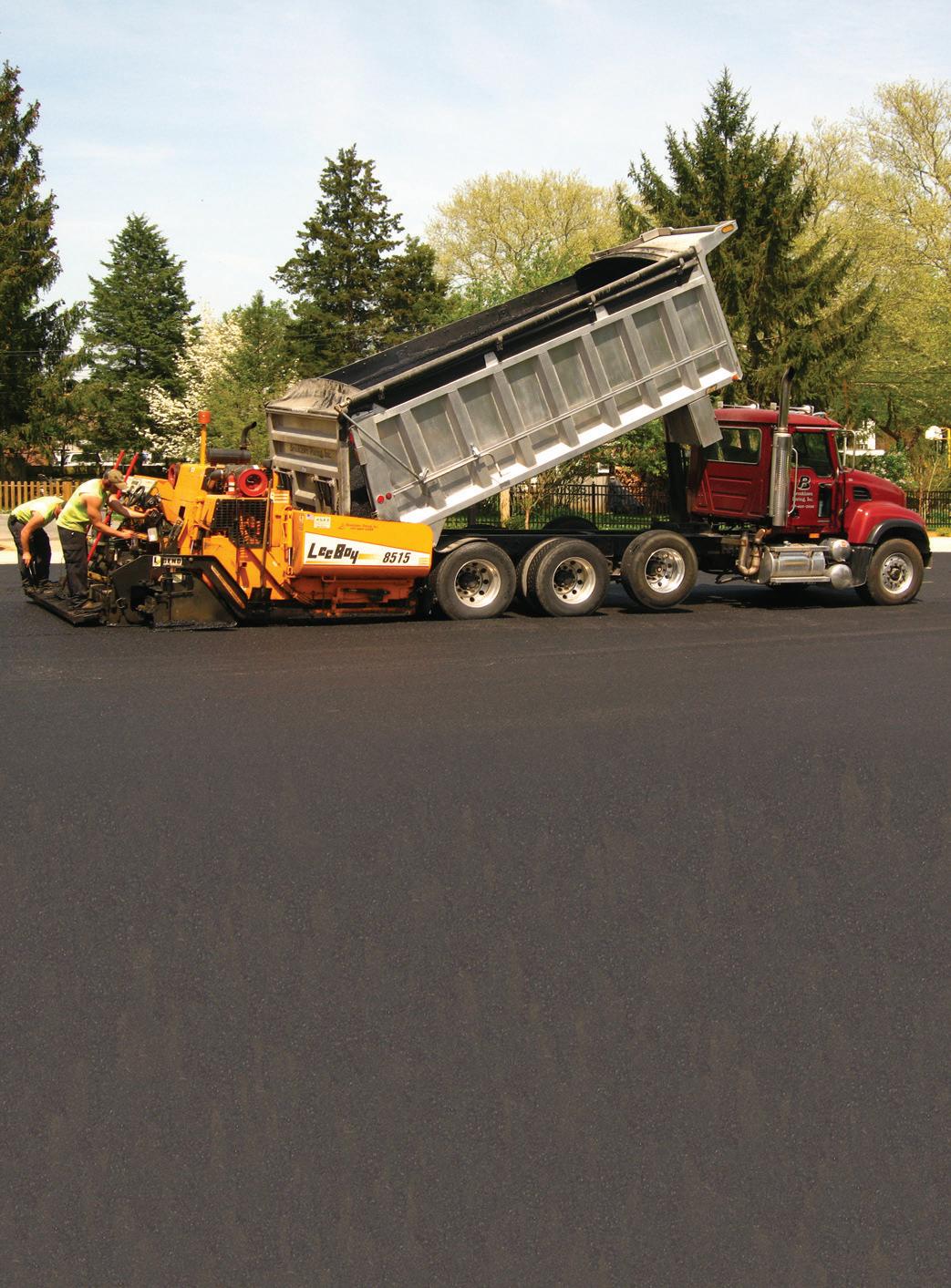
Email: gcurranesq@aol.com
Evening appointments and home visits are available upon request






































 BY ADRIAN ESCHENWALD
BY ADRIAN ESCHENWALD
The Solanco Fair will return on Wednesday, Sept. 20, and festivities will be held through Friday, Sept. 22, at the Solanco Fairgrounds, 172 S. Lime St., Quarryville. The annual event will celebrate the community and culture of the Southern End through a variety of activities and traditional attractions, which are highly anticipated by local residents each year.
On each day of the fair, attendees will be able to peruse a selection of mouth-watering meals and treats from vendors. The food stands will be operated by local service groups and nonprofit organizations, which will offer items such as hamburgers, hot dogs, barbecue chicken, funnel cakes, french fries, milkshakes, ice cream and brownies. A portion of each vendor’s sales will benefit the organization operating the stand.
On Tuesday, Sept. 19, from noon to 9 p.m., entries will be accepted for the fair’s multitude of exhibits and contests. Participants will have an opportunity to enter livestock, produce, handmade crafts, plants, artwork, farm equipment and apiary products to compete in judged displays and activities. Interested parties may also sign up for the fair’s many contests, including the tractor pull competition, peanut and candy scramble, iron man contest and celebrity cow milking contest.
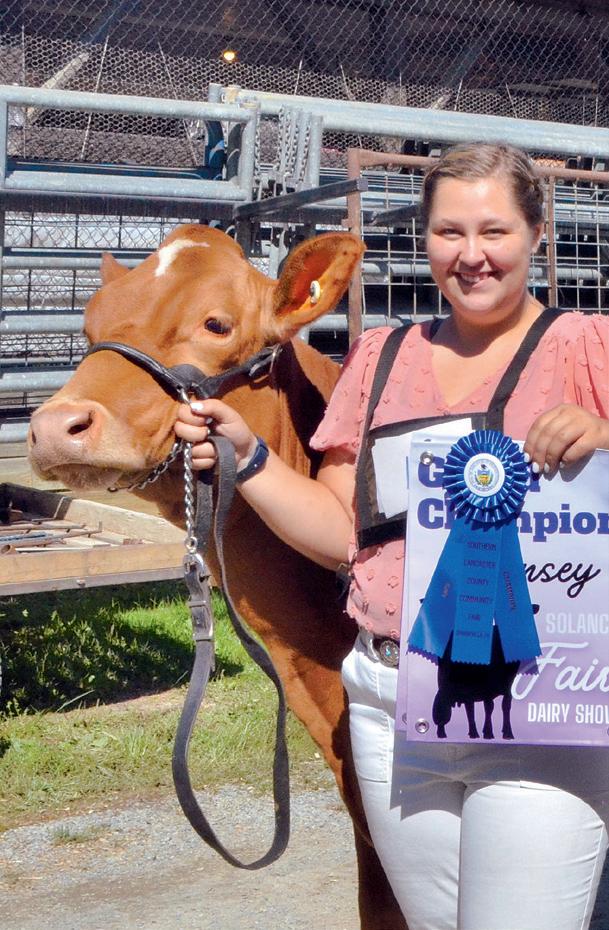
The fair will officially kick off with various exhibit judging on Wednesday at 9 a.m., which will be held in each building on the fairgrounds. Dairy cattle judging, the market lamb show and the market goat display will take place throughout the day, followed by the parade through downtown Quarryville at 6 p.m.
The theme of this year’s parade is “Under the Sea.” Local businesses, individuals, service groups and nonprofit organizations will join the procession through downtown Quarryville with nautically decorated floats and maritime costumes. The parade will begin and end at the Solanco Fairgrounds; traffic will be detoured along the parade’s route, which will include Fourth Street, State Street and South Lime Street.
The festivities will continue on Thursday morning with an antique tractor pull at 11 a.m. The Holstein feeder calf show will be held at 3 p.m., followed by a performance from the Uptown Band at 5 p.m. at the lower ball field. An antique and classic tractor pull and the market steer show will occur at 6 p.m., after which the day will conclude with the baby parade at 7 p.m.
The final day of the fair will begin with a tractor driving contest at 10 a.m. At 4:30 p.m., the Solanco fair queen will be crowned; the new fair queen will then participate in the celebrity milking contest at 5 p.m. From 5:45 to 9:30 p.m., the fair will close out with a youth participation awards ceremony, a market livestock sale, the pedal tractor pull competition, the peanut and candy scramble and the iron man contest. Exhibits will be removed at 9:30 p.m. to conclude the fair.







































The 99th annual West Lampeter Community Fair will take place from Wednesday, Sept. 27, to Friday, Sept. 29, at 851 Village Road, Lampeter. As the event draws closer to its centennial celebration, it will continue its time-honored tradition of offering the community the food and festivities that local residents have grown to love.

The fair will officially open to the public on Wednesday at noon, although exhibits will be judged beginning at 9 a.m. After noon, attendees will be able to peruse multiple exhibits and tents throughout the fairgrounds; displays will include livestock, produce, handmade crafts, homegrown products, floral exhibits, artwork and apiary products. A petting zoo will be open from 1 to 9 p.m.

A market lamb show will begin at 3 p.m., followed by a show from entertainer Andy Rotz, who will offer several Western-themed demonstrations throughout the fair under his alias Cowboy Andy. Music group Barley & Steele will perform at 5 p.m., and the festivities will continue into the evening with a market goat show, a tractor parade, an antique tractor pull and a dessert auction. A parade will begin at the Lampeter-Strasburg School District campus at 7 p.m., and it will highlight the candidates of the West Lampeter fair queen contest as they make their way to the fairgrounds. The fair queen contest will be held at 7:30 p.m., and the first day of the fair will wrap up with a game of tug of war at 9 p.m.

The second day of the fair will kick off with the opening of its exhibit areas and petting zoo at 9 a.m. A market beef cattle show and the children’s sunflower contest will simultaneously take place at 5 p.m., followed by the baby parade and LampeterStrasburg High School marching band concert at 6 p.m. The remainder of the evening will include a market dairy beef show and barnyard chase at 7 p.m., before the activities conclude with another performance from Rotz at 8 p.m. and the tractor games at 8:30 p.m.

On Friday, the final day of the fair will start with the reopening of its various exhibit areas and petting zoo at 9 a.m. Tours of Lampeter-Strasburg School District’s elementary schools will also begin at 9 a.m., and the All-Western horse show will be held from 10:30 a.m. to 4 p.m. Exhibitors will be able to collect cash awards and prizes at the fair office at 5 p.m., after which Rotz will offer another performance alongside the final portion of the AllWestern horse show. A pedal tractor pull competition and the youth encouragement awards will be held at 6 p.m., followed by the youth market sale and calf roping contest at 6:30 p.m. Rotz will offer a final performance at 8 p.m. before the removal of exhibits and conclusion of the fair at 9:30 p.m.
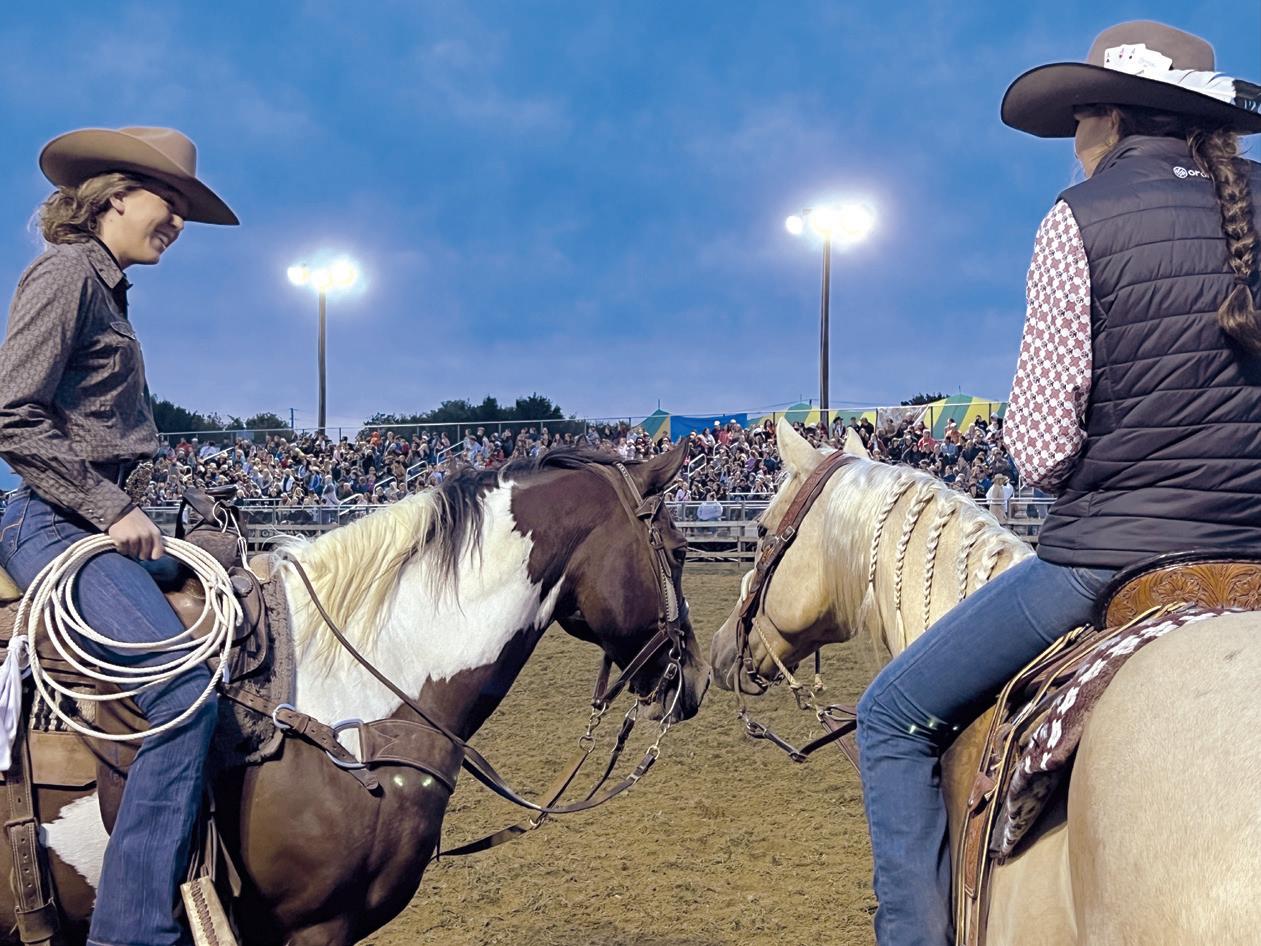

During each day of the fair, attendees will have an opportunity to enjoy traditional meals and confections from multiple vendors. Food stands will offer hamburgers, hot dogs, french fries, funnel cakes, pork barbecue, ice cream and milkshakes among various other items. Each stand will be operated by a local organization, which will receive a portion of the profits from food sales.
For more information, visit https://west lampeterfair.com.




BRANCH LOCATIONS:
Bird-in-Hand | Intercourse
Paradise | Ephrata
MOBILE BRANCH STOPS:
Gratz | Bernville | Manheim

Ephrata | Terre Hill
New Holland | Gap
Honey Brook | Quarryville

Peach Bottom | Kirkwood | Oxford
Visit
Manheim | Schaefferstown NMLS#

R098214

"Growing up on a horse farm, I understand the hard work it takes to carry on Lancaster County's farming traditions."
Farms in the Southern End greatly contribute to Lancaster County's economy.





There are many factors that distinguish Lancaster County from the rest of the state and even the rest of the country. Sprawling fields and an abundance of farmland contribute to the beauty that is cherished by locals and admired by tourists, and much of the county’s character stems from its deep agricultural roots.

When European immigrants first settled in what would become Lancaster County, they quickly realized that the area contained fertile farmland. The early colonists saw the land’s extraordinary agricultural potential and began to establish farms, several of which remain in operation to this day. The county’s agricultural roots and significant number of family-owned farms have continued to shape the community in a number of ways over hundreds of years.
According to the United States Department of Agriculture (USDA), the vast majority of agricultural products that originate in Lancaster County are livestock- or poultry-related. The remaining agricultural output is crop-related, with the most commonly grown crops in the area being corn, soybeans and wheat. Lancaster County is a significant contributor to Pennsylvania’s economy as a whole; the state generates $7.8 billion annually from production agriculture alone, making it Pennsylvania’s No. 1 industry. According to the Pennsylvania Department of Agriculture, the state’s agriculture industry provides almost 600,000 jobs and pays $32.8 billion in wages annually. One in every 10 jobs in Pennsylvania is supported by agriculture.


One of Lancaster County’s most unique characteristics, beyond its inherent agricultural potential, is the fact that almost all of its farms are




family-owned. There are currently over 5,100 farms in Lancaster County; 99% of local farms are familyowned, and they total nearly 400,000 acres of land. Since many of these farms have been passed down from generation to generation within one family, the farmers operating them possess an exceptional level of commitment to their craft.
“With family-owned farms, there is a unique level of commitment and loyalty that allows farmers to look back to past generations for guidance and expertise,” said Lily Guthrie, state and local government affairs specialist with the Pennsylvania Farm Bureau. “It also allows them to look forward to new opportunities to ensure that the legacy can continue for generations to come.”
Although the agriculture industry has continually impacted the economy and culture of Lancaster County since the earliest days, it has also shifted over the course of many years. Data provided by the USDA states that the level of farm output in the United States grew by 175% from 1948 to 2019, increasing at an average annual rate of 1.42%. However, the number of farms in Lancaster County has decreased 10% since 2012. “While the number of farms in Pennsylvania continues to decline, farmers will adapt and become more efficient, as they always do,” Guthrie said.

Regardless of the ebb and flow of farming trends in Lancaster County, agriculture remains embedded in the area’s culture to its core. Beloved traditions such as the annual fairs in the Southern End highlight the many ways that centuries of farming have impacted local residents, from horse shows to livestock judging contests. The number of farms in the region may change, but Lancaster County farmland and its occupants remain as intertwined as ever before.

Partnering with farmers for over 145 years.




You have a vision. Your story is unique. And after running a farm from sunrise to sunset every day, there’s not much time left to get other things done.
So when you have an opportunity to grow your business, you need a partner who believes in your vision, sees your determination and drive, and helps make it happen. Our team at Univest can help you realize the full potential of your family farm.
Whether it’s borrowing to purchase, upgrade or expand farm facilities, or credit lines to optimize flexibility and cash flow, it’s time to explore your possibilities with Univest.
Natural disasters are often devastating, resulting in the loss of lives, livelihoods, and homes. The agricultural sector is especially vulnerable to natural disasters. However, support programs are in place to provide assistance should farmers need it in the aftermath of a natural disaster.
Livestock Forage Disaster Program: The Farm Service Agency of the U.S. Department of Agriculture noted that the Livestock Forage Disaster Program provides compensation to eligible livestock producers who have suffered grazing losses due to drought or fire on land that is native or improved pastureland with permanent vegetative cover. Assistance also is available when land planted specifically for grazing has been affected by drought or fire.
Livestock Indemnity Program: Through this program, benefits are provided to livestock producers for livestock deaths in excess of normal mortality caused by adverse weather or by attacks by animals reintroduced into the wild by the federal government.
Emergency Loan Program: This program supplies loans to producers as they seek to recover from production and physical losses due to drought, flooding and other natural disasters. Loans also may be available after losses due to quarantine or to animal quarantine laws imposed in accordance with the Plant Protection Act.
Emergency Conservation Program: Through this program, farmers and ranchers can receive assistance to repair damage to farmlands caused by natural disasters. The program also helps put in place water conservation methods during severe drought.
Noninsured Disaster Assistance Program: This program pays covered producers of uninsurable crops when low yields, loss of inventory, or prevented planting occur due to natural disasters.


More information about these and other programs can be found at www.fsa.usda.gov.

































As the world population grows, the role of the agricultural sector will become even more prominent. There may be significant demand for agricultural professionals capable of meeting challenges related to climate change and food supply. Current students may consider pursuing one of the following career paths in the agricultural sector.

AGRICULTURAL ENGINEER: Agricultural engineers employ engineering principles to solve issues related to agricultural production. An agricultural engineer may design facilities or machinery or develop solutions to address problems related to irrigation and soil conservation, among other projects. Students interested in a career as an agricultural engineer can expect to study mathematics, physics, chemistry, computer engineering, and engineering analysis and design as they pursue their degrees.
AGRONOMIST: Agronomists work with crops and soil management and may work as analysts, environmentalists or forecasters. Agronomists may be tasked with analyzing soil structure and chemistry and studying how water is moving within soil. Students will study agriculture, biology, chemistry, and physics en route to earning a degree that will help them become an agronomist. Mathematics and statistics also will be part of their studies.
BIOCHEMIST: Biochemists study the chemical and physical principles of living things and biological processes. Within the agricultural sector, biochemists may contribute to the development of agricultural products, including those that will serve a medicinal function. Biochemistry, chemistry, biology, calculus, and physics will be part of students’ courseload as they pursue degrees that prepare them for a career as a biochemist.
CLIMATOLOGIST: Climatologists may figure prominently in the agricultural sector over the next several decades. Climatologists study climate change, variability and the biosphere. Climatologists offer insight about the effects of climate change on the growth and development of agricultural products, in cluding fruits, grains and vegetables.
The natural sciences feature prominently in climatologists’ educations, and students also will study meteorology as part of their coursework.
FOOD SCIENTIST: Food scientists study chemistry, biochemistry, microbiology, and engineering so they can assist in the development of new food products. Food scientists may manage processing plants, and some serve as researchers in an effort to solve problems related to food production.


PLANT PATHOLOGIST: Plant pathologists specialize in analyzing issues related to plant diseases. Research features prominently in plant pathologists’ work, and many are employed in university settings. Some plant pathologists work for companies attempting to develop pest-resistant plants. Advanced degrees are necessary to work as a plant pathologist, and students will study mycology, bacteriology, virology, and physiology, among other subjects, as they pursue their degrees.
The agricultural sector employs millions of people around the globe. Today’s students may consider entering this sector for their future career.












The farmers of yesteryear might not be too familiar with their surroundings if they were to visit a modern farm. While the men and women who made their livings as farmers decades ago would no doubt still recognize certain farm features that have withstood the test of time, they might not understand the inner workings of the modern farm, particularly in regard to the role technology now plays within the agricultural sector.
Technology has changed agriculture in myriad ways. The methods farmers employ to produce food and improve the efficiency of their operations has changed as technology has evolved. One of the more noticeable changes that’s hard to miss on modern farms is the use of drones.
Drones have been around for decades. Sometimes referred to as unmanned aerial vehicles, or UAVs, drones can be utilized in ways that can save farmers money and protect the planet.









MONITOR CROPS: With a drone flying overhead, farmers can spot and quickly identify issues affecting their crops before those issues escalate into something larger.


ANALYZE SOIL : Agricultural drones utilize complex mapping functions to gather data about the soil, including areas where it might be stressed. That information enables farmers to develop accurate soil samples that can be used to guide decisions in regard to irrigation and fertilization.










REDUCE WASTE: AgEagle notes that data gathered by drones can help farmers determine the vigor of their crops at various stages of growth. Such information can prevent overfertilization and overwatering, thereby reducing waste and runoff, benefiting the planet as a result.
PLAN: Drones can be used to collect data on crop growth and health at various times throughout the growing season. This data can help farmers develop more accurate predictions regarding harvest quality and crop yield, making it easier for them to plan ahead.
Agricultural drones are one of the many examples that illustrate how technology has changed and will continue to change the ways modern farmers conduct business.




farm families and the community with clothing, footwear, home living and hardware since 1985.





















In-house labequipment andadvanced digital technology forx-raysand ultrasounds
On-site surgical anddental suites, as well as well-stocked pharmacies

Preventative and sick/urgent visits


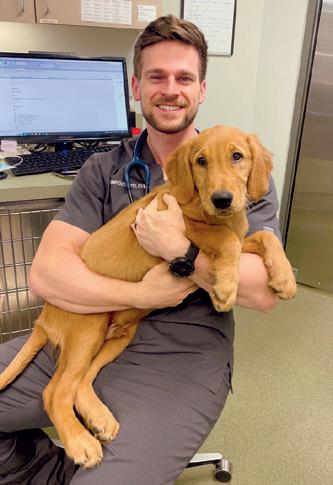



Diagnostic and therapeutic services








Behavioral and dietary counseling


Farmers have likely felt the need to increase production to meet the demand of a growing population, which may require employing more efficient measures to ensure maximum output. Unfortunately, efficiency doesn't always mesh with sustainability, so commercial operations may have to make some modifications to find a balance between serving the public and protecting the planet.
Green farming utilizes different technology and practices in order to decrease detrimental impact on the environment. According to the farming resource NuFarming, agricultural operations have a significant impact on climate change. Adopting some different practices can lessen that impact.
Plants are not the only thing on a farm that can benefit from the sun. Farmers can convert a portion or all of their power needs to solar. According to the U.S. Department of Energy, there are benefits when solar companies and farmers work together. Solar developers reduce installation costs and upfront risk by placing solar modules on previously tilled agricultural land. Vegetation under modules also can contribute to lower soil temperatures and increased solar performance. Agricultural land managers can reduce energy costs and diversify their revenue streams with solar. Plus, they can market products to sustainability-minded customers.

Solar is not the only renewable energy option. Farmers can incorporate wind and hydroelectric power, as well.
This farming technique has been used for thousands of years and involves growing different crops in different seasons on the same land. Farmers reduce the chances of pests and diseases becoming problems in the soil because frequent crop changes prevent invaders from gaining a foothold. Farmers may use fewer fertilizers and pesticides as a result.

Farmers can improve productivity while also reducing environmental impact with these two growing methods. NuEnergy has stated that hydroponic systems grow plants in mineral solutions or in materials like perlite or gravel. Aquaponics involves raising aquatic animals in addition to growing crops. The nutrient-rich water containing waste from fish and other marine life is reused as a medium for growing plants. Both methods remove the need for soil.


Drip irrigation methods deliver water to the roots of plants through a series of pipes or tubes. Because water is not being sprayed into the air through sprinklers and other methods, less is lost to evaporation, and less water overall may be needed to provide for crops.
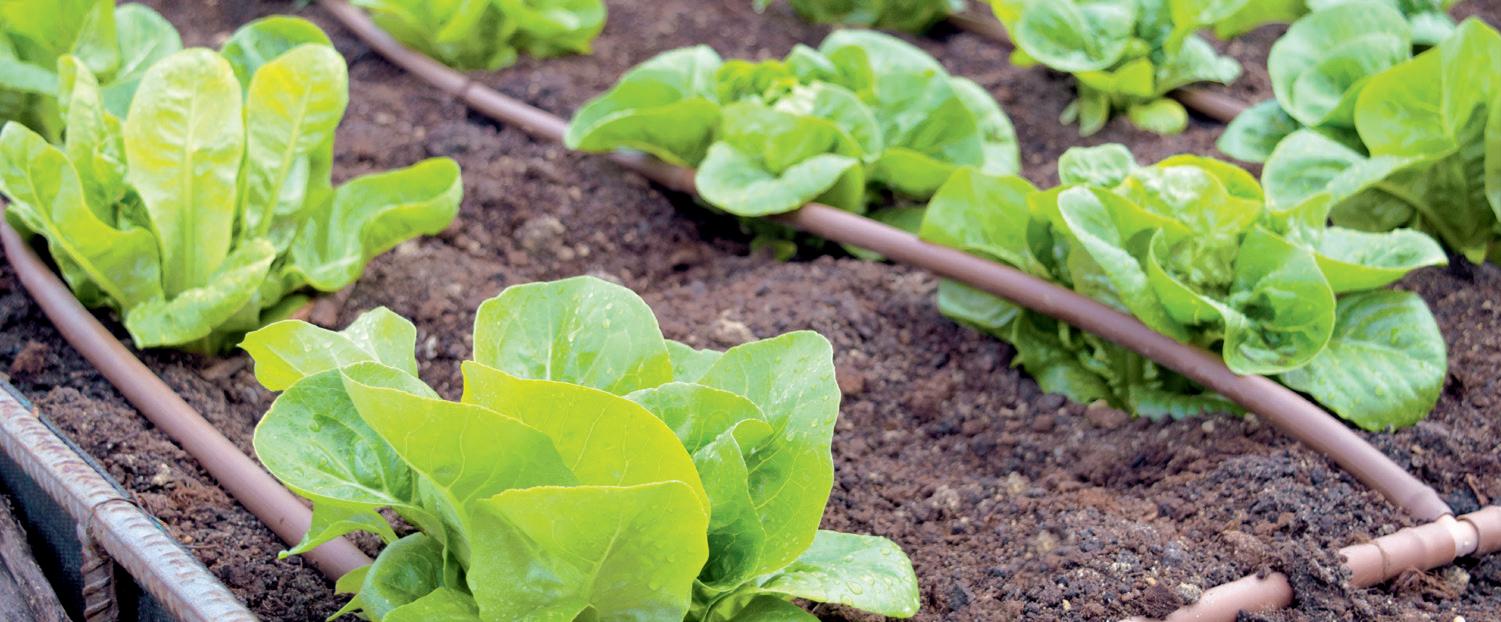






Plastic seems like it may not have a purpose on farms, but recycled plastic, which is used in plastic mulch, can help produce plentiful crops with less water. Plastic mulches raise soil temperatures and


insulate against evaporation so plants can grow faster and mature sooner. Invasive weeds also may be less likely to take root in plastic mulch or when crops are grown on black plastic.










natural pesticides









To reduce reliance on chemical pesticides, farmers can introduce plants that pests tend not to like. For example, interspersing crops with plants that are natural bug repellants, such as basil, lavender, and lemongrass, may keep insects at bay. Alliums, chrysanthemums, marigolds, and other flowers planted nearby also may deter bugs.



Green farming can have a variety of environmentally friendly benefits, making it something more agricultural operations may want to consider adopting.






